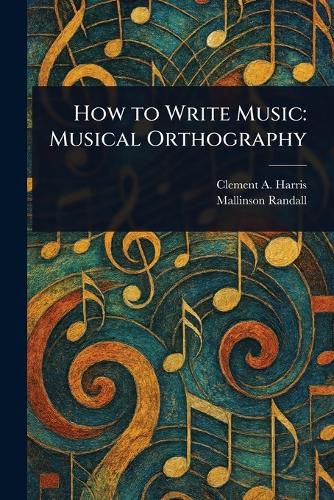Readings Newsletter
Become a Readings Member to make your shopping experience even easier.
Sign in or sign up for free!
You’re not far away from qualifying for FREE standard shipping within Australia
You’ve qualified for FREE standard shipping within Australia
The cart is loading…






This title is printed to order. This book may have been self-published. If so, we cannot guarantee the quality of the content. In the main most books will have gone through the editing process however some may not. We therefore suggest that you be aware of this before ordering this book. If in doubt check either the author or publisher’s details as we are unable to accept any returns unless they are faulty. Please contact us if you have any questions.
Unlock the secrets of musical composition with "How to Write Music: Musical Orthography" by Clement A. Harris. This comprehensive guide, meticulously prepared for print republication, delves into the fundamentals of music theory and musical notation. Aspiring composers and musicians will find invaluable instruction on harmony and the principles underlying effective musical writing.
Explore the intricacies of musical orthography, learning the art of accurately and effectively representing musical ideas on paper. Whether you're a student of music or simply a lover of the art form, this book offers a timeless approach to understanding the building blocks of composition. Discover the enduring principles that have shaped musical expression for generations, presented in a clear and accessible format. A vital resource for anyone seeking a deeper understanding of music theory and the practical skills needed to write music.
This work has been selected by scholars as being culturally important, and is part of the knowledge base of civilization as we know it.
This work is in the public domain in the United States of America, and possibly other nations. Within the United States, you may freely copy and distribute this work, as no entity (individual or corporate) has a copyright on the body of the work.
Scholars believe, and we concur, that this work is important enough to be preserved, reproduced, and made generally available to the public. We appreciate your support of the preservation process, and thank you for being an important part of keeping this knowledge alive and relevant.
$9.00 standard shipping within Australia
FREE standard shipping within Australia for orders over $100.00
Express & International shipping calculated at checkout
This title is printed to order. This book may have been self-published. If so, we cannot guarantee the quality of the content. In the main most books will have gone through the editing process however some may not. We therefore suggest that you be aware of this before ordering this book. If in doubt check either the author or publisher’s details as we are unable to accept any returns unless they are faulty. Please contact us if you have any questions.
Unlock the secrets of musical composition with "How to Write Music: Musical Orthography" by Clement A. Harris. This comprehensive guide, meticulously prepared for print republication, delves into the fundamentals of music theory and musical notation. Aspiring composers and musicians will find invaluable instruction on harmony and the principles underlying effective musical writing.
Explore the intricacies of musical orthography, learning the art of accurately and effectively representing musical ideas on paper. Whether you're a student of music or simply a lover of the art form, this book offers a timeless approach to understanding the building blocks of composition. Discover the enduring principles that have shaped musical expression for generations, presented in a clear and accessible format. A vital resource for anyone seeking a deeper understanding of music theory and the practical skills needed to write music.
This work has been selected by scholars as being culturally important, and is part of the knowledge base of civilization as we know it.
This work is in the public domain in the United States of America, and possibly other nations. Within the United States, you may freely copy and distribute this work, as no entity (individual or corporate) has a copyright on the body of the work.
Scholars believe, and we concur, that this work is important enough to be preserved, reproduced, and made generally available to the public. We appreciate your support of the preservation process, and thank you for being an important part of keeping this knowledge alive and relevant.